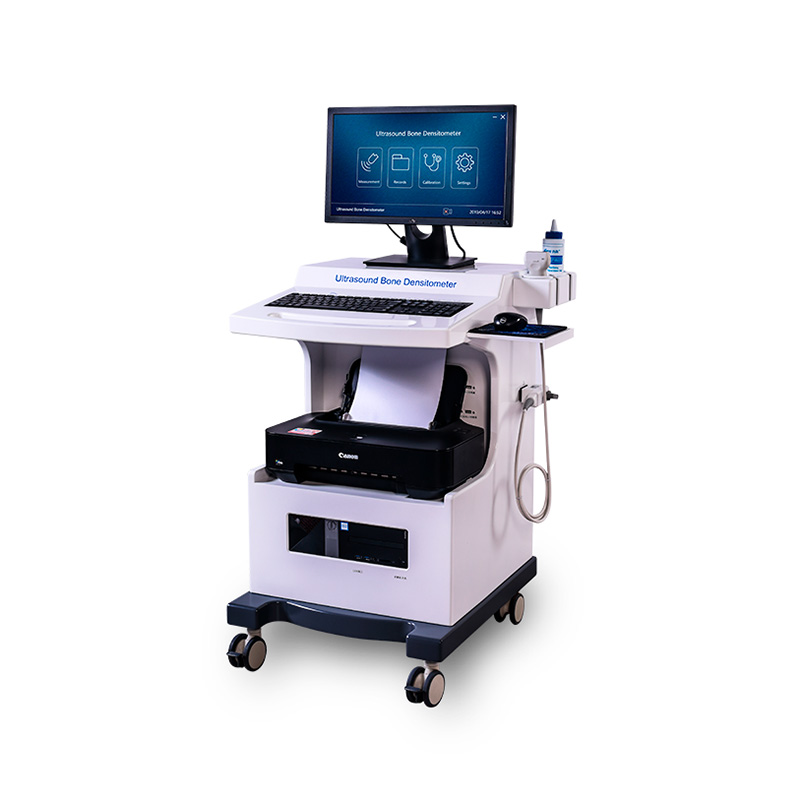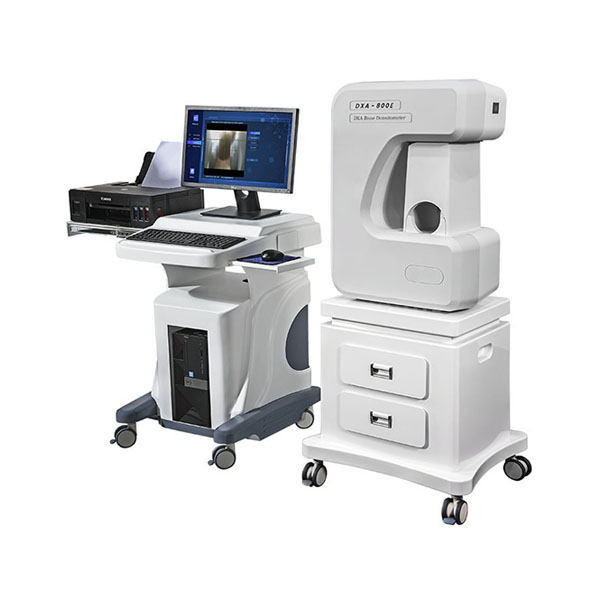Portable Ultrasound Bone Densitometer BMD-B3
Bmd-B3 is a portable ultrasonic bone density instrument for measuring bone density. The device could be used for disease diagnosis, or for disease screening and physical examinations in healthy people. Ultrasonic bone density instrument than DEXA bone density instrument cost-effective, simple operation, no radiation, high precision, less investment. A bone density test, sometimes called a bone density test, can detect if a patient has osteoporosis.
When you have osteoporosis, your bones become weak. They become more prone to rupture. Bone joint pain and fracture caused by osteoporosis are common clinical diseases, such as lumbar deformation, intervertebral disc disease, vertebral body fracture, cervical spondylosis, limb joint and bone pain, lumbar spine, femoral neck, radial fracture, etc. Therefore, bone mineral density examination is very necessary for the diagnosis and treatment of osteoporosis and its complications.
Main Feature
● Portable and convenient, flexible movement
● Precision, beautiful
● All dry technology, convenient diagnosis.
● Measurement sites: radius and tibia.
● The measurement process is quick, simple and fast
● High measurement efficiency, short measurement time
● High accuracy of measurement
● Very good reproducibility measurement
● Unique correction system, effective correction system error.
● There are clinical databases in different countries, including: Europe, America, Asia, China
● Strong international compatibility. It measures coverage for people between the ages of 0 and 120. (Children and adults)
English menu and color printer report, easy to operate
●CE, ISO, CFDA, ROHS, LVD, EMC certification
Technical Specifications
 Large Scale Integrated circuit
Large Scale Integrated circuit
 Multi - layer circuit board design
Multi - layer circuit board design
 High shielding Multi-point Signal Contact Mode
High shielding Multi-point Signal Contact Mode
 Precise Mould Manufactured
Precise Mould Manufactured
 Famous Brand Embedded Industrial Control Computer
Famous Brand Embedded Industrial Control Computer
 Special Analysis System Based on Different Countries People
Special Analysis System Based on Different Countries People
Osteoporosis Risk Factors
Age: As we get older, our bone density decreases and the risk of developing osteoporosis increases. Men over the age of 65 and post-menopausal women are at the greatest risk.
Sex: Women develop osteoporosis more often than men, and they are also more likely to have bone fractures.
Low body weight (compared to body size)
Diet low in calcium
Vitamin D deficiency
Lack of exercise
Family history: Women whose mother or father broke their hip because of osteoporosis are at greater risk of developing osteoporosis themselves.
Smoking
Drinking a lot of alcohol
Long-term steroid use
Use of other medications, such as some antidepressants (SSRIs) or diabetes medicines (glitazones)
Conditions such as rheumatoid arthritis or hyperthyroidism (an overactive thyroid gland)
Bone Density Testing Results Will Be In The Form Of Two Scores
T score: This compares your bone density with a healthy, young adult of your gender. The score indicates if your bone density is normal, below normal, or at the levels that indicate osteoporosis.
Here’s what the T score means:
● -1 and above: Your bone density is normal
● -1 to -2.5: Your bone density is low, and it may lead to osteoporosis
● -2.5 and above: You have osteoporosis
Z score: This allows you to compare how much bone mass you have compared with other people of your age, gender, and size.
A Z score below -2.0 means that you have less bone mass than someone your age and that it could be caused by something other than aging.











